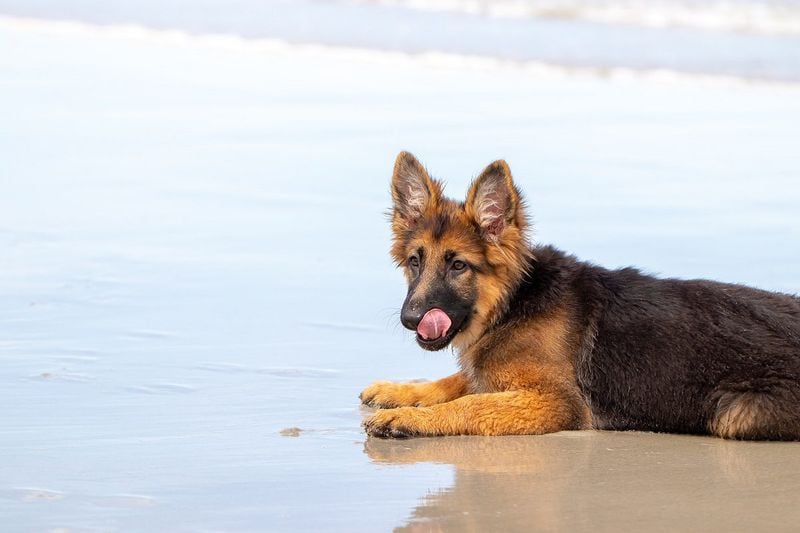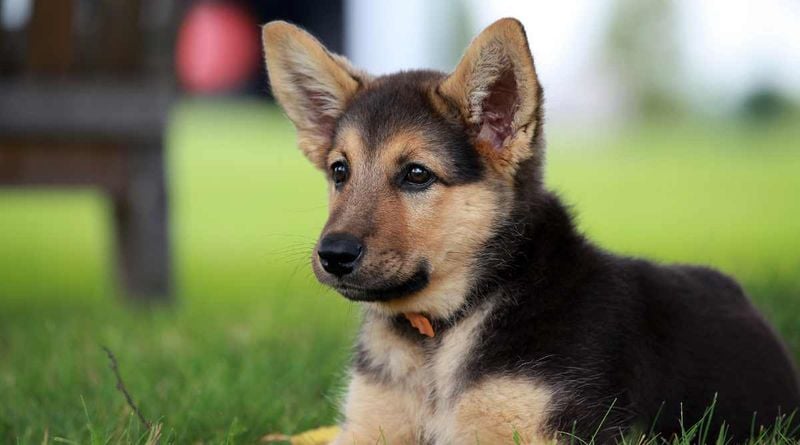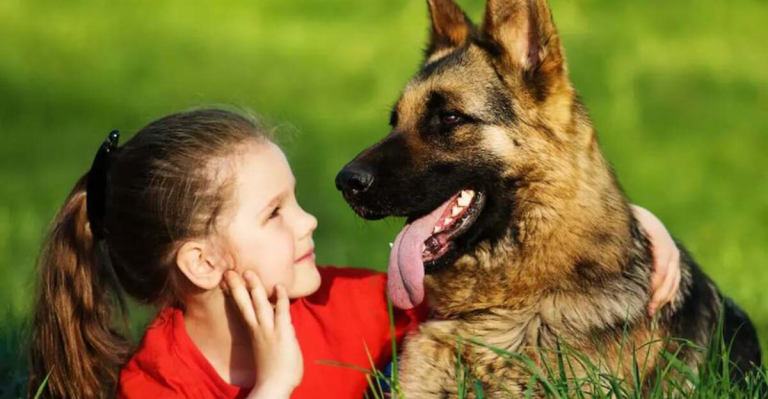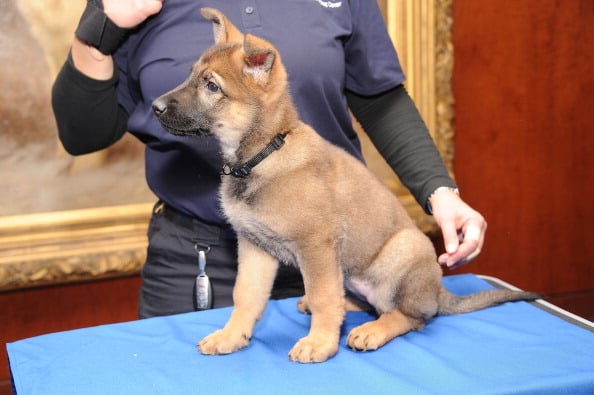12 Things You Need To Know About The Miniature German Shepherd
They’ve got the fierce loyalty of a German Shepherd, the smarts to outwit your puzzle toys, and a size that won’t knock over your coffee table—meet the Miniature German Shepherd, the downsized version of one of the world’s most beloved breeds.
But here’s the thing: Miniature German Shepherds aren’t exactly what you might think.
There’s no officially recognized “mini” version in the purebred world.
Instead, these smaller shepherd lookalikes are often the result of carefully planned mixes between a standard German Shepherd and smaller breeds like Border Collies, Poodles, or even Yorkshire Terriers.
The goal? A pup that brings all the intelligence, loyalty, and versatility of a full-size German Shepherd in a more compact, apartment-friendly frame. And they’re winning hearts fast.
Whether you’re hoping for a dog that fits better in your home—or just in your lap—Miniature German Shepherds might seem like the perfect solution. But like any dog, they come with their own quirks, challenges, and care needs.
Some bark like watchdogs on high alert. Others inherit the herding instincts of their smaller parent breeds. And while they may be “mini,” their personalities are anything but.
In this article, we’ll break down everything you need to know before welcoming one into your life—from where they come from and how to care for them, to training tips, grooming advice, and how to spot a responsible breeder.
Whether you’re actively searching for your next canine companion or just love learning about unique dog breeds, this guide will give you the full scoop.
1. Size and Appearance
Miniature German Shepherds are typically smaller than their full-sized counterparts, standing around 15 to 20 inches tall and weighing between 35 and 50 pounds. This compact size makes them easier to manage in smaller homes or urban settings.
Despite their reduced stature, they often maintain the signature athletic build and confident stance of a standard German Shepherd. You’ll still notice that noble head, upright ears, and that signature bushy tail.
Their coats vary depending on the mix, but you’ll usually find the classic black and tan pattern, along with sable, black, or even cream variations.
Some inherit a fluffier coat, especially if bred with a Collie or Poodle, adding an extra layer of charm to their already adorable frame.
2. Breed Origins & Genetics
Miniature German Shepherds aren’t an official breed but are the result of crossbreeding.
Most commonly, breeders mix standard German Shepherds with smaller breeds like Border Collies, Miniature Poodles, or Yorkshire Terriers to achieve the desired size and temperament.
This downsizing was intentional—to preserve the loyalty and intelligence of the German Shepherd while making the dog more suitable for smaller living spaces.
The goal is a pup that’s trainable, protective, and compact enough for urban or apartment life.
Depending on the mix, Miniature German Shepherds may inherit herding instincts, curly coats, or hypoallergenic traits.
Their exact look and personality can vary significantly, which makes each one unique but also makes researching the breeder and lineage essential.
3. Temperament and Personality
Miniature German Shepherds are fiercely loyal and naturally protective, making them excellent watchdogs. They often bond closely with their families and thrive on companionship and purpose.
These dogs are extremely intelligent and eager to learn. Their quick minds respond well to training sessions, especially when reinforced with praise and play. Without stimulation, though, they can get into mischief fast.
Their energy levels vary by mix, but most need daily exercise and mental challenges. They’re usually great with kids and can get along with other pets—especially if socialized early. Just don’t be surprised if they try to herd your cat!
4. Ideal Living Environment
Thanks to their smaller size, Miniature German Shepherds adapt more easily to apartments than their full-sized relatives. However, they’re still active dogs who benefit from access to a yard or regular trips to the park.
They need about an hour of exercise daily, along with mental stimulation like training games or puzzle toys. A bored Mini GSD can become a barky or destructive one.
First-time dog owners can handle this breed with a bit of preparation. Consistency, patience, and early socialization go a long way. Their versatility makes them a great fit for a variety of homes—as long as their minds and bodies stay busy.
5. Training Tips
Training a Miniature German Shepherd can be a joy thanks to their sharp minds and eagerness to please. Start obedience training young—sit, stay, and leash manners should be introduced in the first few months.
Socialization is just as important. Expose them to people, dogs, and different environments to prevent fear-based behaviors down the line. Puppy classes can be a great starting point.
If your pup inherits a tendency to bark or develop separation anxiety, you’ll want to address those early. Create positive alone-time experiences and use puzzle toys to help ease their nerves when left alone.
6. Exercise and Activity Requirements
Miniature German Shepherds need daily exercise to stay balanced—mentally and physically. Aim for at least 45–60 minutes of walks, play, or structured activity like fetch or agility drills.
They thrive on games that challenge their brains as well as their bodies. Hide-and-seek with treats, scent games, or interactive toys can do wonders to burn energy.
Signs your pup is under-stimulated? Chewed shoes, digging, and relentless barking. A tired Miniature GSD is a well-behaved one, so make regular enrichment a top priority.
7. Grooming and Coat Care
Miniature German Shepherds are moderate to heavy shedders, depending on their coat type. If mixed with a breed like the Poodle, they may shed less—but most still require weekly brushing.
Aim to brush them 2–3 times per week to reduce shedding and prevent tangles. During seasonal shedding periods, daily brushing might be necessary to keep fur under control.
Bathing should be done once every 6–8 weeks, or as needed. Don’t forget to trim their nails monthly and check their ears for buildup. A simple grooming routine helps keep them healthy and looking sharp.
8. Health and Lifespan
Miniature German Shepherds typically live between 12 to 15 years, depending on the genetic makeup and overall care. Their hybrid nature may offer some protection against hereditary issues—but it’s not guaranteed.
They can still be prone to common ailments like hip dysplasia, allergies, and digestive sensitivities. If the mix includes smaller breeds, dental problems might also pop up.
Preventive care is key. Regular vet checkups, a quality diet, and joint supplements can help your pup stay healthy well into their senior years. Knowing their lineage helps prepare you for potential health challenges.
9. Nutrition
A balanced, high-quality dog food is essential to fuel a Miniature German Shepherd’s active body and sharp brain. Look for a protein-rich formula that matches their size and energy output.
Puppies should eat specially formulated puppy food for small to medium breeds, with 3–4 meals per day. Adults can typically eat 2 meals a day, adjusted for activity levels.
Some mixes—especially those with Collie or Poodle genes—may have food sensitivities or require grain-free options. Monitor their weight and adjust portions as needed to keep them lean and healthy.
10. Cost of Ownership
Bringing home a Miniature German Shepherd can cost anywhere from $500 to $3,000 depending on breeder reputation and lineage. Adoption through rescues may be more affordable, typically ranging from $150 to $400.
Ongoing expenses include quality food, annual vet visits, flea/tick prevention, grooming tools, toys, and training. Expect to spend roughly $1,000 to $1,500 per year on care.
Budgeting is essential—especially for emergency vet care or pet insurance. These dogs are a long-term commitment, so make sure your wallet is as ready as your heart.
11. How to Tell If It’s Really a Miniature German Shepherd
Not every pup labeled as a Miniature German Shepherd is the real deal. Look for classic shepherd traits: erect ears, alert eyes, and a confident gait—even if the size is scaled down.
Behavior can also be a clue. True mixes often display high intelligence, herding instincts, and loyalty typical of full-size GSDs. If the temperament feels totally off, it may be another breed mix entirely.
For confirmation, consider a canine DNA test. It’s the best way to understand your dog’s true genetic background and avoid mislabeling, which unfortunately happens with backyard breeders.
12. Where to Find One
If you’re going through a breeder, choose one who specializes in Miniature German Shepherds and can provide health clearances and parent breed information. Avoid puppy mills or anyone hesitant to share details.
Rescue groups and shelters may also have shepherd mixes that fit the mini mold. Don’t overlook these pups—they often make amazing companions.
Before adopting, ask about the dog’s behavior, health history, and known parentage. Whether from a breeder or shelter, make sure you’re prepared for the energy and needs that come with this intelligent, active companion.
















